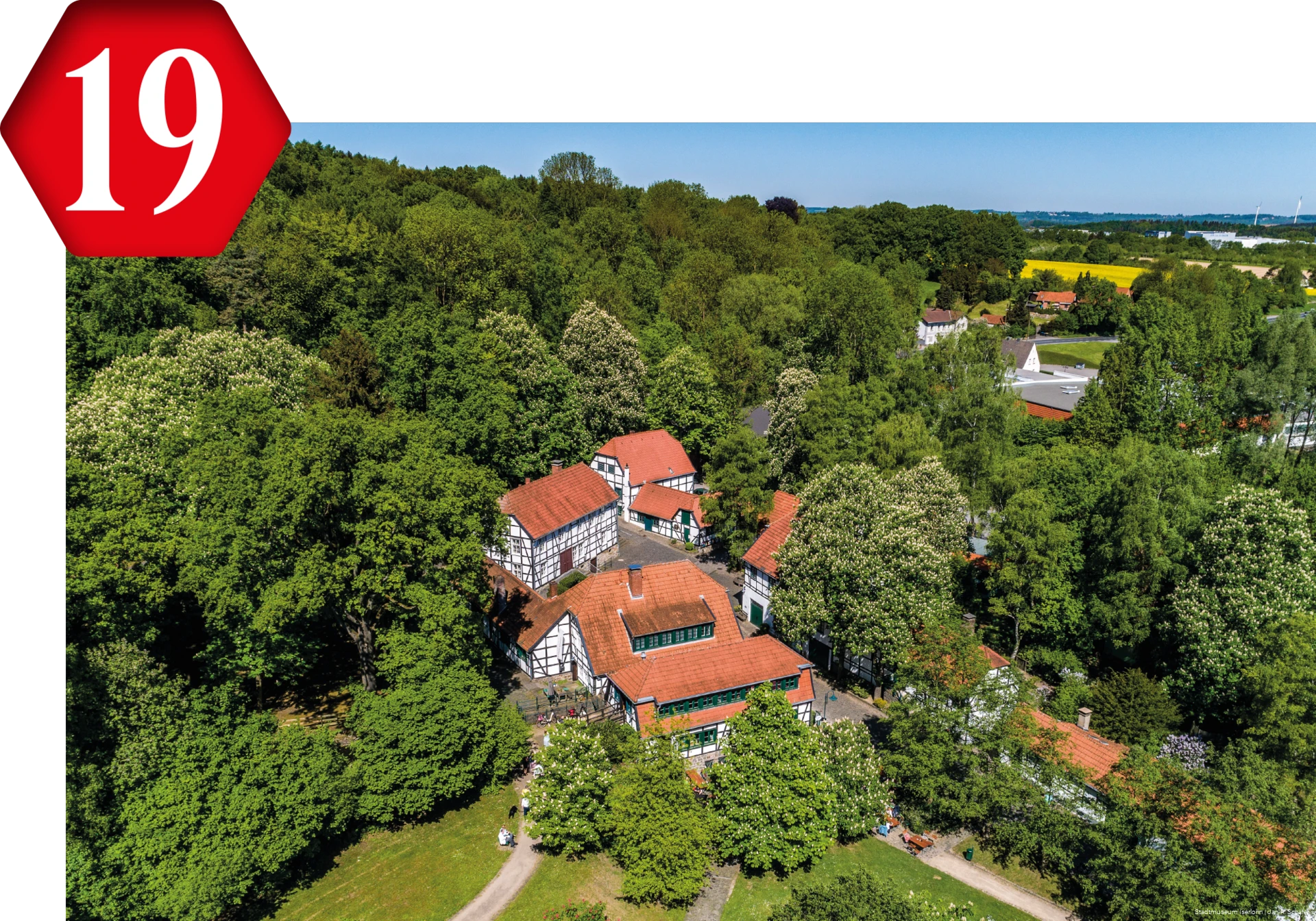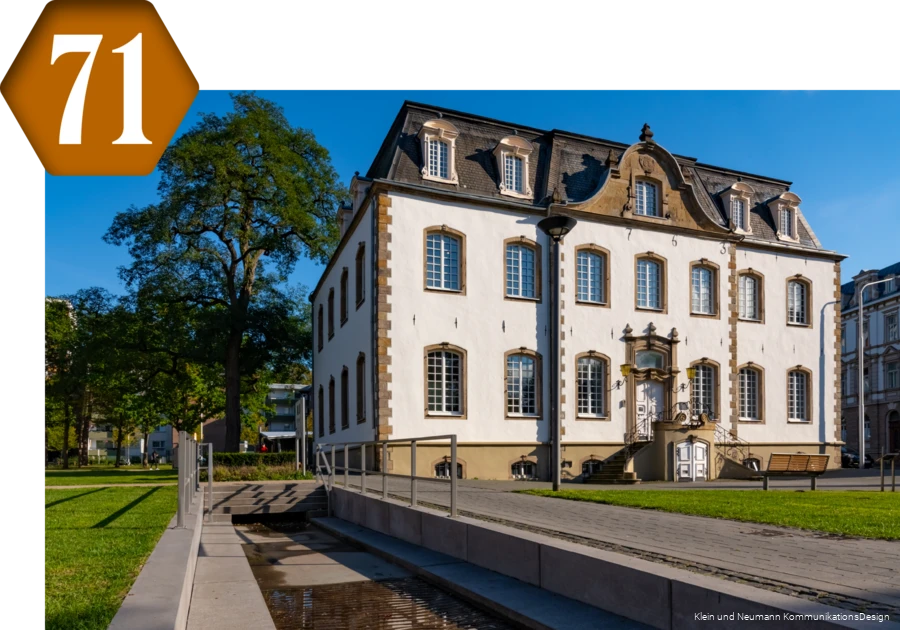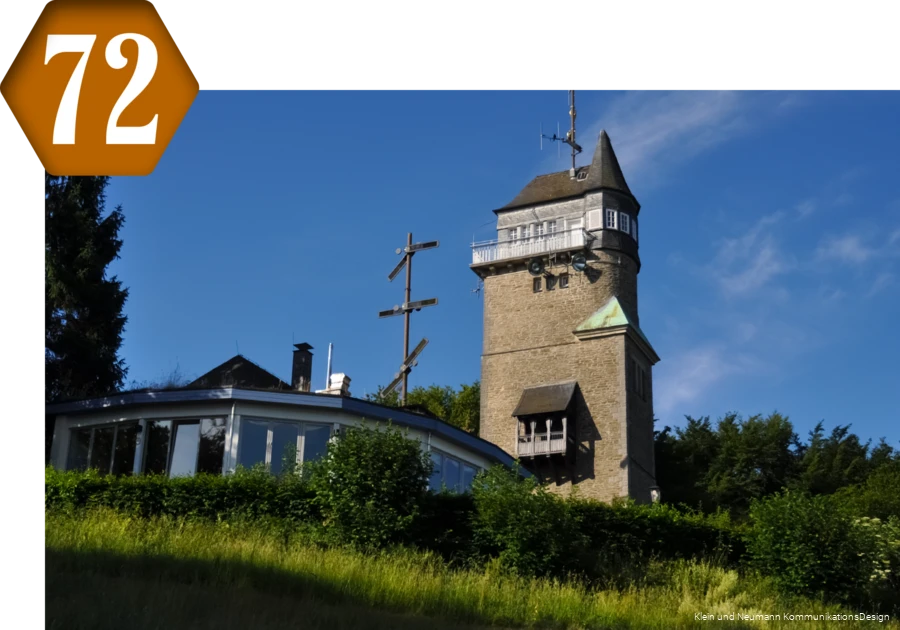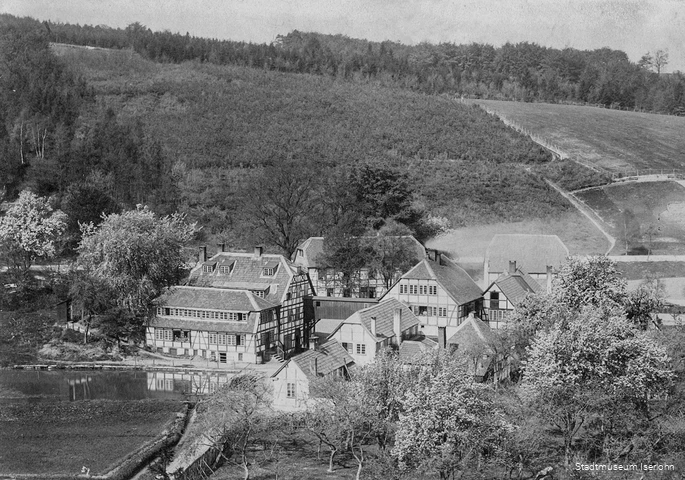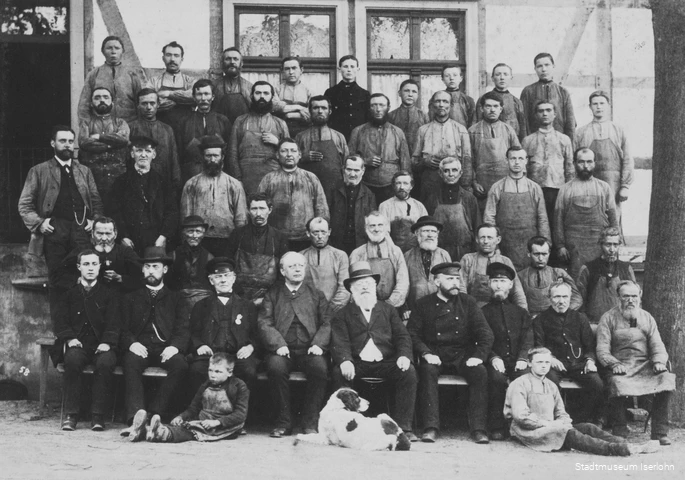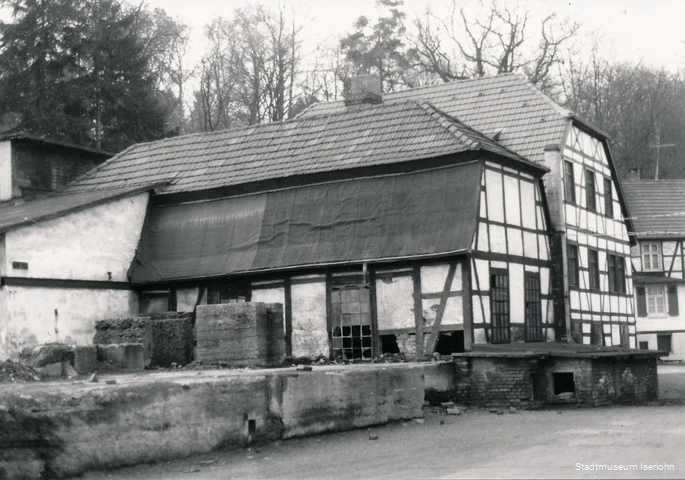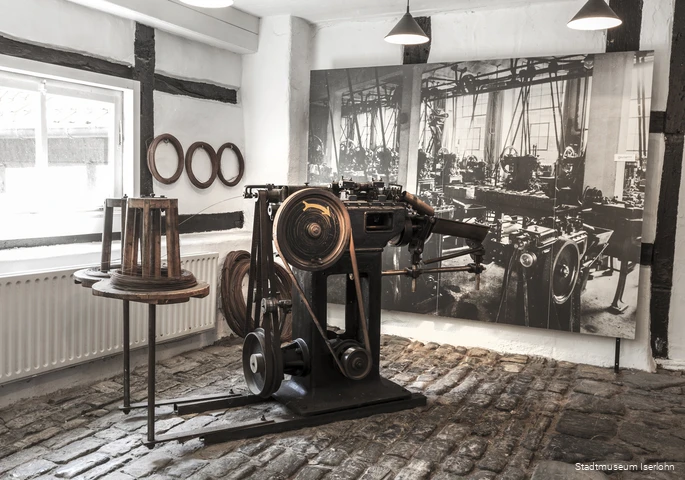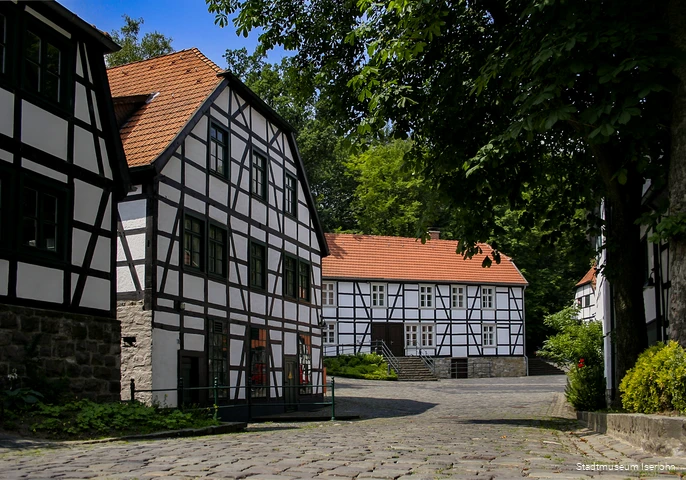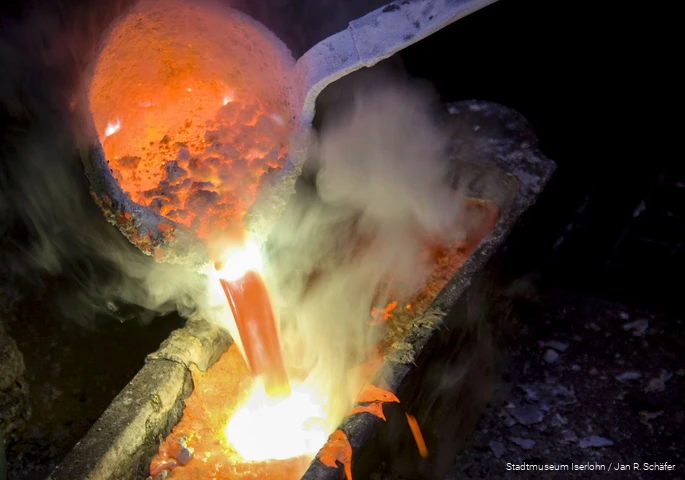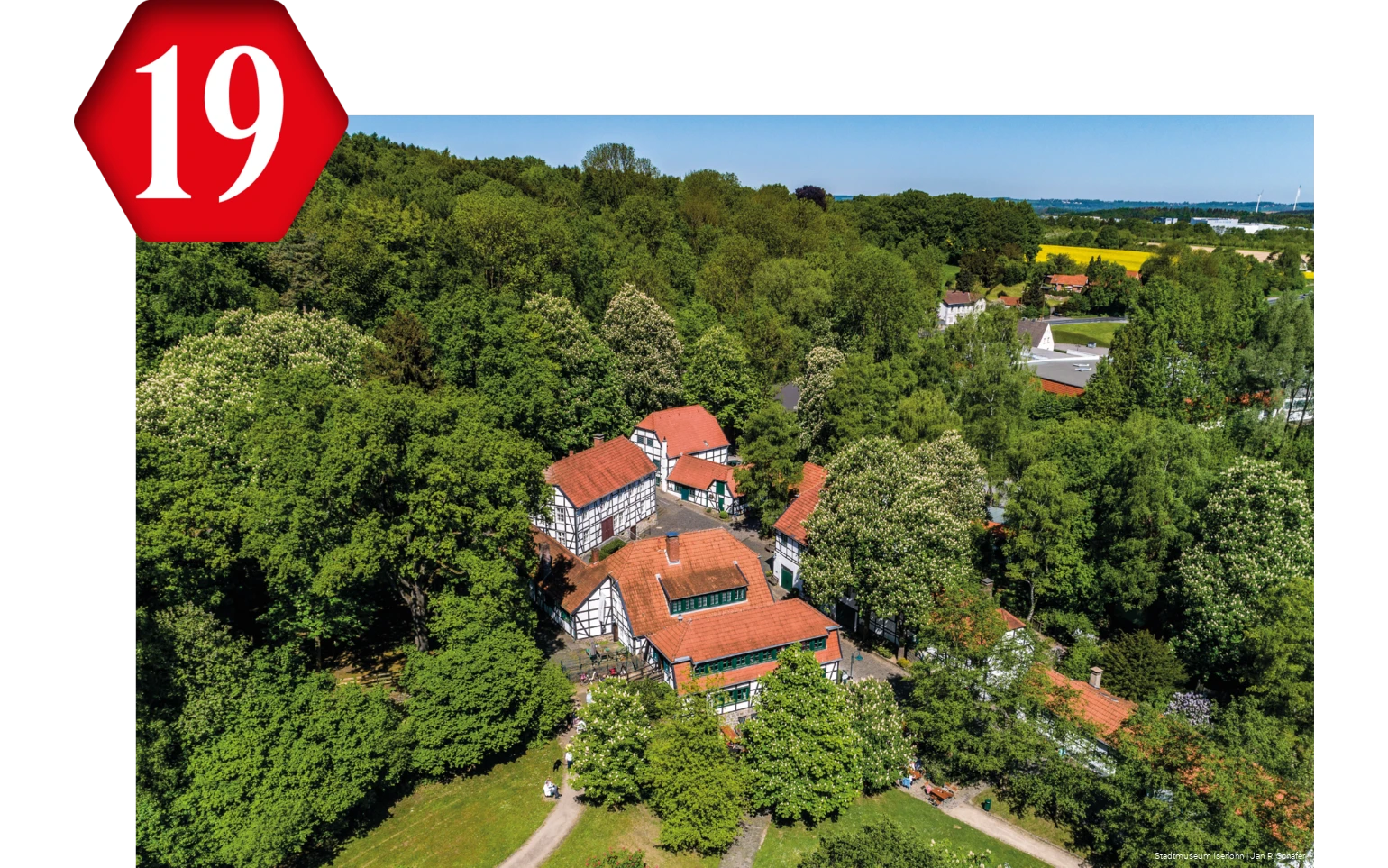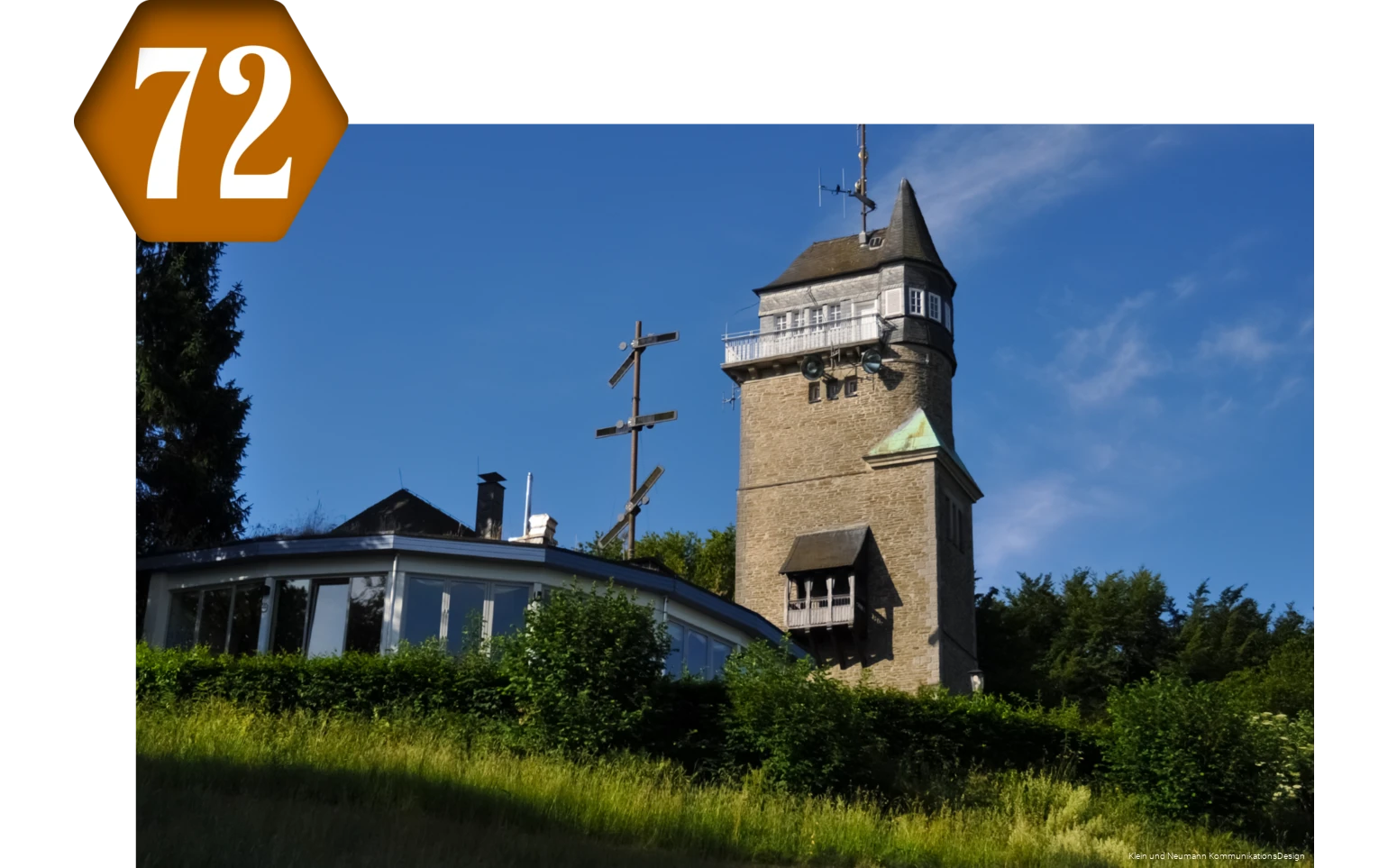View of the Maste-Barendorf factory [approx. 1900]
Historische Fabrikanlage Maste-Barendorf
Straightening, deburring, blueing, turning over: the machines in the Needle Museum accurately demonstrate how wire is turned into an eye needle. Right next door, in the brass foundry, visitors can watch brass being cast live. Needles and brass products - Iserlohn was once famous for this, even in the neighboring Ruhr area. And here, in the Museum Barendorf, their production is shown ...
- Infotext read more
-
… Factory complex? The place looks more like a traditional rural village. But the timber-framed idyll is deceptive: this brass rolling mill, founded in 1822, was something like an early industrial start-up company at the gates of a town with trade relations stretching from Russia to Spain. Today, the museum village successfully combines industrial history with artists' studios and cultural events.
Johannes Dunker and Franz Maste, the two founders of the factory, opt for the location because of the Baarbach brook, which drives all the facilities until well into the 19th century. And there are quite a few of them, for the original brass processing plant expands over the years to include a wire drawing mill, an iron foundry as well as a file smithy, an awl forge and a silver plating house. But around the middle of the 19th century in the last decades, dependence on water power turns out to hamper further development. In the meantime, more efficient power sources have gained ground in the Ruhr area, relying on hard coal and coke. In addition, the Ruhr-Sieg railway line from Hagen to Siegen, inaugurated in 1861, does not cut directly through Iserlohn. Instead, it is only in 1865 that a branch line provides the connection. This slows down the regional metal industry - a circumstance that causes some entrepreneurs to become involved in the Ruhr region from then on. The best-known example is Hermann Diedrich Piepenstock, son of a merchant family from Iserlohn, who becomes the pioneer of the Dortmund steel industry with the Hermannshütte steelworks in Hörde.
The Maste-Barendorf factory is still able to survive. A crucial turning point finally comes with World War I. After its end, most of the facilities are sold off because they are unprofitable. Only the "Central Factory" continues to operate for a short time as a leased company. In 1981, the city of Iserlohn acquires the listed building complex and opens the needle museum in 1987, followed by and the brass foundry three years later and the hairpin factory in 1993. Thus, the industrial monument keeps alive the memory of the two most important local industries.
Steel Time Travel Destinations Nearby
The "Steel Time Travelers" Luise & Alfred: Historische Fabrikanlage Maste-Barendorf
Lu:
Hang on, Al. My tire is flat - and so am I - after the ride from the Ruhr up here to Iserlohn ...
- Full dialog text
-
Lu: Hang on, Al. My tire is flat - and so am I - after the ride from the Ruhr up here to Iserlohn.
Al: That's okay, I wanted to stop at Johannes Dunker and Franz Maste anyway - they have the best tools far and wide.
Lu: That's great, there's a whole village with small factories. Probably has something to do with the Baarbach here!? Tools, you say? I can patch the hole in the hose.
Al: I don't know if there are bicycle tools here. But coffee grinders and pocket knives they make here. Perfect for a break.
Lu: Great. A Käffken would be the icing on the cake! Let's stop and enjoy.
Al: By the way, Dunker and Maste also cast fine brass in Barendorf.
Lu: Well, I'm going to have a cool Radler poured for me now. Then I mend the wheel and then it goes with fresh strength up on the Iserlohner Fröndenberg. I still have to telegraph a dispatch to Berlin - business ...
Visitor information
Address:
Baarstr. 220 - 226
58636 Iserlohn
Phone: 02371/217 1961 or 1962
museum@iserlohn.de
www.museen-iserlohn.de
Opening hours:
The factory village is freely accessible 24 h.
Needle Museum:
Thursday to sunday 11 a.m. to 5 p.m.
![]()
![]()
![]()
![]()
